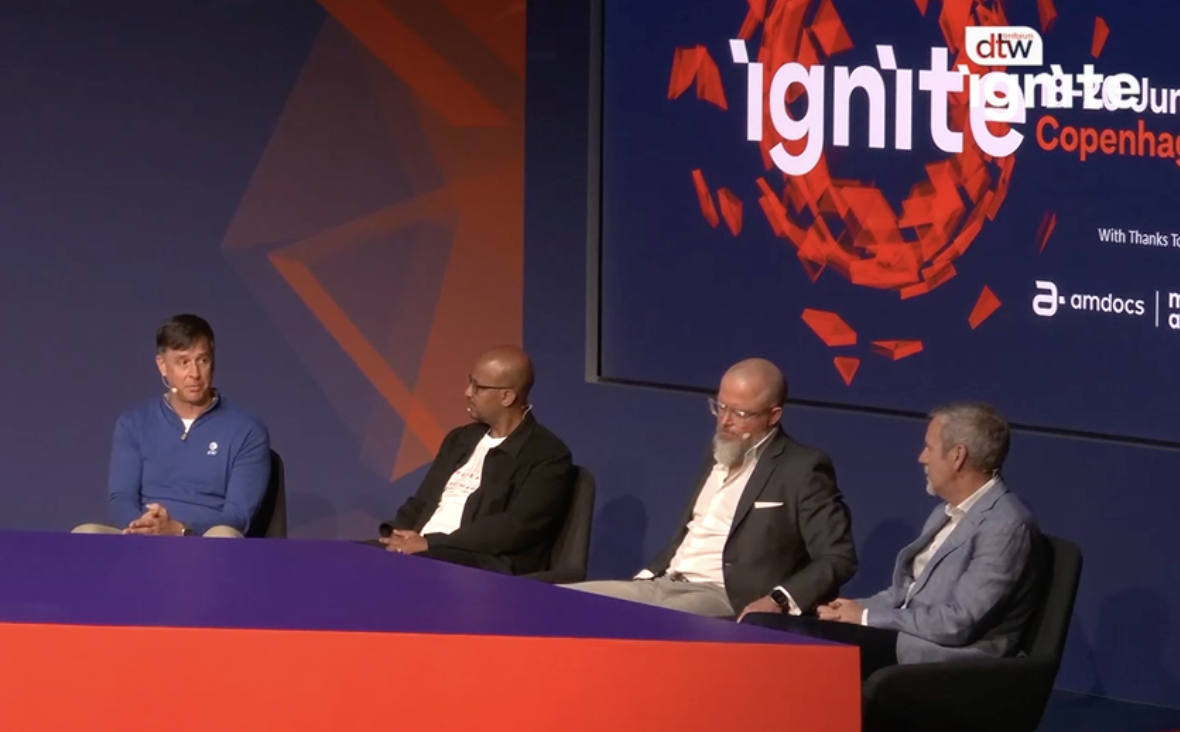How to build a telco platform—four CTOs draw the blueprint

Convergence, rejuvenation, transformation, sophistication…AT&T, Deutsche Telekom, Telstra, Vodafone execs chart a course to growth at DTW24—Ignite
There were a number of prominent themes this year at TM Forum’s Digital Transformation World—Ignite event in Copenhagen, Denmark. AI, obviously, cloud, operating models, reskilling/upskilling, etc…But the high-level view, brought into focus during a CTO panel, was around the idea of (digitally) transforming the network into a platform that’s flexible, integrated, interoperable and scalable, and that, if done right, can help a relatively static industry begin to realize new growth.
AT&T CTO Jeremy Legg said the company is “a believer that the world is headed towards convergence as it relates to technology.” He said customers want one provider for broadband, satellite, Wi-Fi and wireless. “We ultimately think that a consumer is going to want to get their connectivity from one place rather than multiple places given the simplicity that that would offer to those customers, and their ability to be connected wherever they are.”
Legg talked about the idea of a network platform available to developers that can hammer out customized experiences made possible by the underlying network capabilities. He referenced AT&T’s $15 billion Open RAN deal with Ericsson as a way third-party developers can gain access to the wireless network, and also called out services in the software layer on top of the wireline network.
“The goal here is to begin opening up our wireline and wireless networks to the development communities that exist…so that we can begin to create scaled marketplaces that developers that leverage public cloud or developers that leverage on premises services can begin to tap into.”
If hyperscalers can facilitate the purchase of compute and storage with a keyboard and a credit card, he said, operators should be able to provision services with the same degree of simplicity to deliver more seamless digital experiences.
Vodafone CTO Scott Petty said “rejuvenation is underway” in the telecoms industry, but many companies are having a tough time, he acknowledged. He called out three areas of focus:
- “Time to market is critical. We need to work on accelerating our ability to deliver value.”
- “Generative AI offers us a fantastic opportunity to become true platform companies,” but we need to get those platforms right from data architectures to infrastructure. “Don’t waste time building your own AI infrastructure. Focus on those partnerships…that will unlock value and deliver technology capabilities really, really quickly.”
- And, “We have to modernize…We’ve built out huge estates of legacy. We haven’t been great at transforming those over time.” Customers won’t wait on a five-year modernization program. “We need to be able to modernize as we deliver products, as we deliver new capabilities.”
“The future is bright for technology,” Petty said. “AI will not only change what we build for our companies, it will change how we build for our companies. It’s up to us to harness that opportunity in front of us and really deliver for our industry.”
Deutsche Telekom Group CTO Abdurazak Mudesir also had three big focus areas: building scaled, cloud-based network platforms, fostering autonomous network operations and creating new business opportunities. On point two, he said autonomous networks hinge on getting rid of legacy tech and processes, simplifying what’s left, then digitalizing and automating it.
In terms of new business opportunities, he said the idea is “making the cake bigger not just for ourselves but for the entire ecosystem.” That includes exposing application programming interfaces (APIs) across fixed and mobile networks and further developing network slicing. “We in the telco industry have a huge opportunity to transform,” Mudesir said.
Telstra Group Executive, Product and Technology, Kim Krogh Anderson is tracking an “inflection point” that can be seen as either a “burning platform” or a “massive opportunity.” Regardless, he said, the current state of growth and return on investment “is not good enough. You cannot be happy where we are as an industry at the moment.”
Specific to how operators can capitalize on artificial intelligence, Anderson delineated four layers of AI: application, data, compute and network. “AI will not have the impact we all expect without one of these layers.” He said no one has yet convinced him that commodity compute and storage in a public cloud is more important than the foundational connectivity layer.
“So it’s our job to make that foundational layer a growth business,” Anderson said. “Network is sophisticated. There’s software in it, there’s AI in it, there’s security in it, there’s a lot of telemetry in it. We need to use that and we need to reinvent this industry and save this industry. It deserves it…No one [is] coming to save us. It’s up to us to reinvent and save this industry.”

Comments are closed.